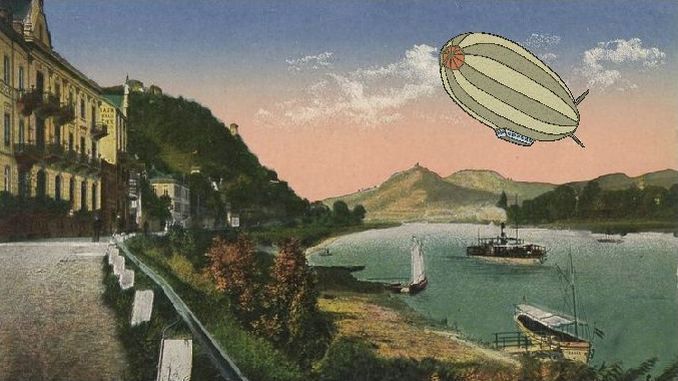
Golden era
After the Weimar Republic had survived the year of crisis 1923, a short time of economic recovery and political stability began. These were the “Golden Twenties”. However, the German democracy was shaky. Already in the middle of the twenties, the parties of the center and center-left lost many votes whereas the hardliners, even extremists on both sides grew stronger.
Dawes Plan
An international committee under chairman Charles G. Dawes from the USA worked out a plan for the reparations to be paid by Germany, that’s the Dawes Plan. Germany had to pay huge amounts every year that were to increase from 1928 onwards. That way, the Allies had guarantees. Similarly, Germany was granted large foreign loans and the Allies’ right on sanctions was limited. Eventually, also France accepted the Dawes Plan and withdrew her troops from the occupied areas in July and August 1925.
In the following years, the German economy gradually and gained some political recovery and some stability. Furthermore, a lot was done for people: unemployment insurance, 8-hour-days, better protection for working youngsters and mothers, paid vacation, new flats to live in and education benefits, employees’ councils to represent employees’ interests.
The hardliners grow stronger
The German democracy, however, was shaky, and it was a period of uneven prosperity. Already in the middle of the twenties, the parties of the center and center-left lost many votes whereas the hardliners, even extremists on both sides grew stronger. Chancellors like Wilhelm Marx struggled to keep democratic governments going, foreign Minister Stresemann sought understanding with the former enemies.

Swing to the Right
Reichspräsident Friedrich Ebert died in 1925. Field Marshal Hindenburg, a supporter of the monarchy and candidate of the political Right, won the elections and became Reichspräsident. He swore an oath on the Weimar Constitution and remained loyal to it until the end. For many people and particularly the Reichswehr troops, Hindenburg became a “Substitute Emperor” because he stood for the conservative, national tradition, and with him on top they could arrange with the Republic, although they rejected parliamentarian democracy. Yet, Hindenburg was already 78 years old when he took up his new office.
Briand and Stresemann
As to foreign policy, the outstanding persons were Aristide Briand from France and Gustav Stresemann from Germany. Both strove for understanding instead of eternal enmity.
In October 1925, France, Belgium, Great Britain as well as partially Italy, Poland, and Czechoslovakia concluded Locarno Treaties. Germany recognized her Western borders, giving up Alsace-Lorraine and accepting a demilitarized Rhineland. Britain, Italy, and Belgium would back France should German troops march into the Rhineland. Germany would not have to fear further French attacks on the Rhine and Ruhr area. After years of occupation, the Rhinelanders breathed a sigh of relief.
In 1926, Germany joined the “League of Nations”. The same year, Briand and Stresemann together received the Nobel Peace Prize. In 1930, the last Allied troops left Germany, five years earlier than stipulated in the Treaty of Versailles, as an answer to the policy of reconciliation under the Stresemann administration.
Yet, not all people in Germany and France were ready for a policy of understanding. In the German general elections for the Reichstag of 1928, the Deutschnationale Volkspartei (DNVP, German National People’s Party) emerged as second-strongest faction in the Reichstag, after a campaign against the Locarno Treaties. In France, the hardliner Poincaré soon replaced Briand.

Be the first to comment